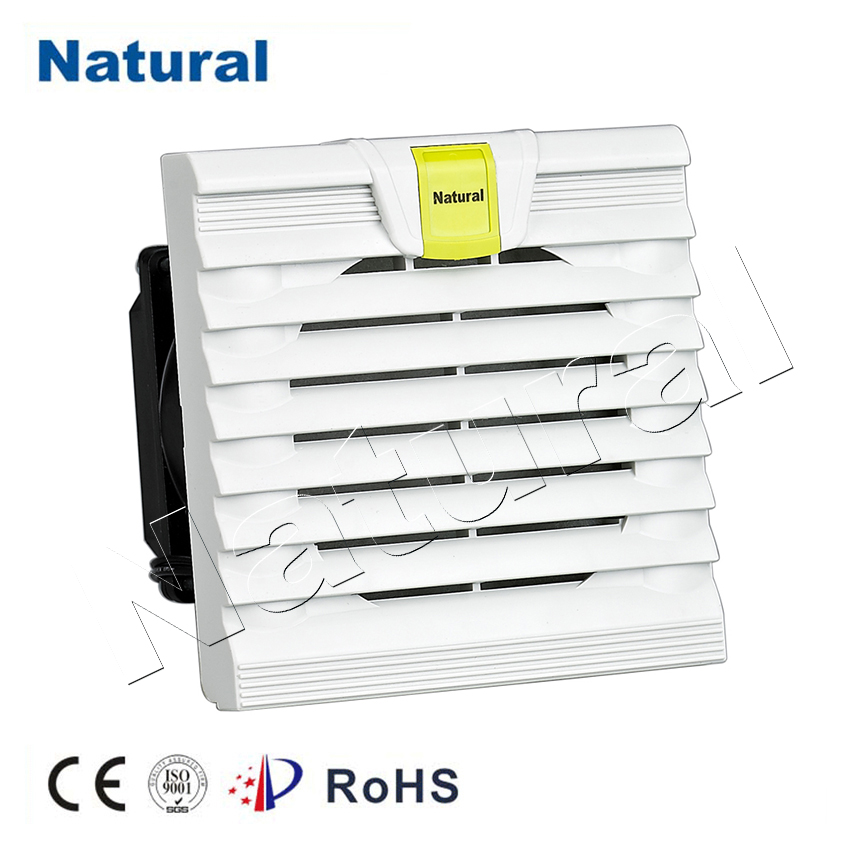In the world of electronics and industrial equipment, maintaining the optimal operating temperature is crucial to ensure longevity and reliability. One of the key factors in achieving this is proper ventilation, and two commonly used solutions are cabinet fans and filter fans. In this article, we will explore the differences between these two options and discuss their respective advantages and applications.

Cabinet Fan: A cabinet fan is a simple yet effective device designed to circulate air within an enclosure or cabinet. It typically consists of a fan unit and a set of blades that draw air into the cabinet. Cabinet fans are commonly used to prevent the buildup of heat inside electronic enclosures, which can result from the operation of various components such as power supplies, amplifiers, and drives. Advantages of Cabinet Fans: Efficient Cooling:Cabinet fans are excellent at dissipating heat quickly, ensuring that the temperature within the enclosure remains within acceptable limits. Cost-Effective:They are relatively affordable and easy to install, making them a budget-friendly option for many applications. Low Maintenance:Cabinet fans require minimal maintenance, with periodic cleaning being the primary upkeep task. Applications of Cabinet Fans: Industrial Automation:Cabinet fans are commonly used in industrial automation systems where multiple electronic components are housed within enclosures. Telecommunications:They are also prevalent in the telecommunications industry to maintain the temperature of networking equipment. Filter Fan: Filter fans, on the other hand, serve a dual purpose of cooling and filtering the air inside enclosures. These fans consist of a fan unit, an exhaust filter, and an intake filter. The fan draws air from outside the enclosure, passes it through the intake filter, and then directs it into the enclosure. Simultaneously, the exhaust filter filters out any dust or particles from the air inside the enclosure. Advantages of Filter Fans: Clean Air:Filter fans provide a continuous supply of clean air to the enclosure, preventing dust and contaminants from entering and potentially damaging sensitive equipment. Enhanced Cooling:While cooling is their primary function, filter fans also improve the overall air quality within the enclosure, leading to better performance and longevity of electronic components. Versatility:Filter fans are adaptable to a wide range of applications and are available in various sizes and configurations to suit specific needs. Applications of Filter Fans: Medical Equipment:Filter fans are commonly used in medical equipment enclosures to ensure a clean and sterile environment for sensitive instruments. Food Processing:In the food processing industry, filter fans help maintain the integrity of electronic controls in dusty or humid environments. Agriculture:Agricultural machinery often employs filter fans to protect electronics from dust and debris in outdoor conditions. Conclusion: Choosing between cabinet fans and filter fans depends on the specific requirements of your application. If your primary concern is efficient cooling at a low cost and maintenance level, cabinet fans may be the right choice. On the other hand, if maintaining clean air and preventing contaminants from entering your enclosure are essential, filter fans are the superior option. In many cases, a combination of both types may be used to provide optimal temperature control and air quality, ensuring the longevity and reliability of your equipment.